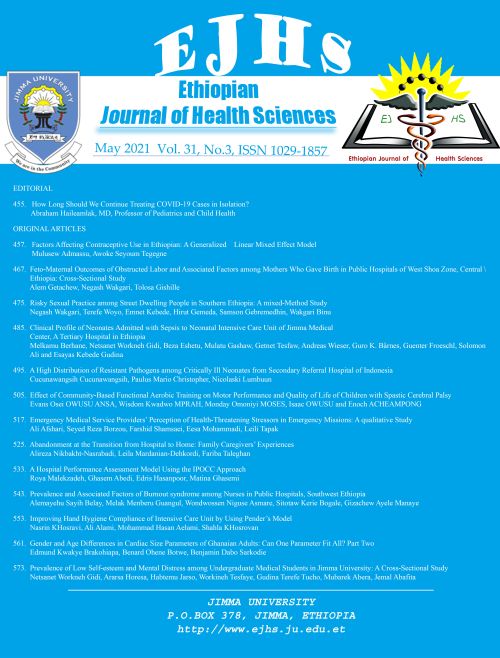Main Article Content
Feto-Maternal Outcomes of Obstructed Labor and Associated Factors among Mothers Who Gave Birth in Public Hospitals of West Shoa Zone, Central Ethiopia: Cross-Sectional Study Alem Getachew1, Negash Wakgari2*, Tolosa Gishille3
Abstract
BACKGROUND: Obstructed labor the major cause of adverse feto-maternal outcomes. Hence, the study assessed adverse fetomaternal outcomes of obstructed labor and associated factors among women who gave birth in public Hospitals of West Shoa Zone.
METHODS: Cross-sectional study design was conducted among 277 respondents. The required data were extracted from the mothers’ chart by using a systematic random sampling method. Checklists were used to collect data. Bivariable and multivariable logistic regression was used to identify factors associated with feto-maternal outcomes. The odds ratio with 95%CI and p-value were used to identify the significant variables.
RESULTS: In this study, 145(52.3%) and 157(56.7%) of the respondents had adverse maternal and fetal outcomes respectively. Mothers who were referred from the health center (AOR: 3.96, 95%CI: 1.61-9.8) and who had a trial of labor at the health center and home had a more likelihood of adverse maternal outcomes than those who were referred and had trial of labor at hospital respectively. In addition, mothers who were not followed by partograph and in labor for >24hrs had also a more likelihood of adverse maternal outcomes than their counterparts. Likewise, newborns whom their mothers were not followed by partograph and mothers in labor for >24 hrs had also a more likelihood of adverse fetal outcomes than their counterparts. Hence, health professionals should give special attention to early diagnosis and referral of obstructed labor to higher facilities.






